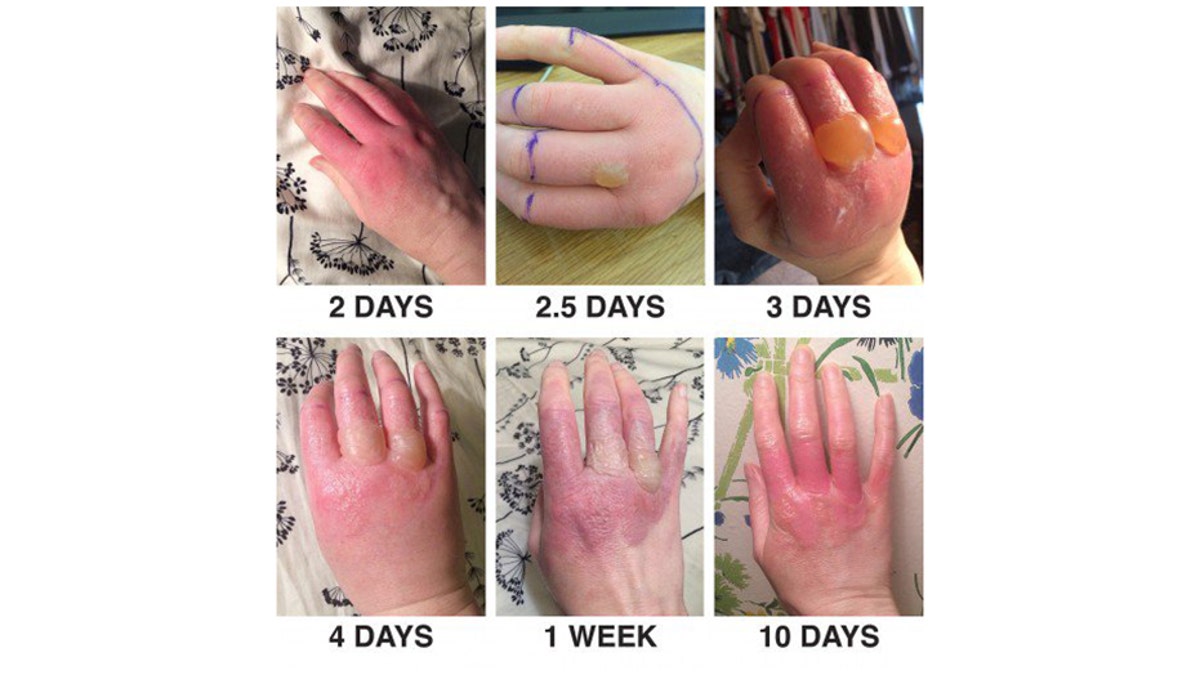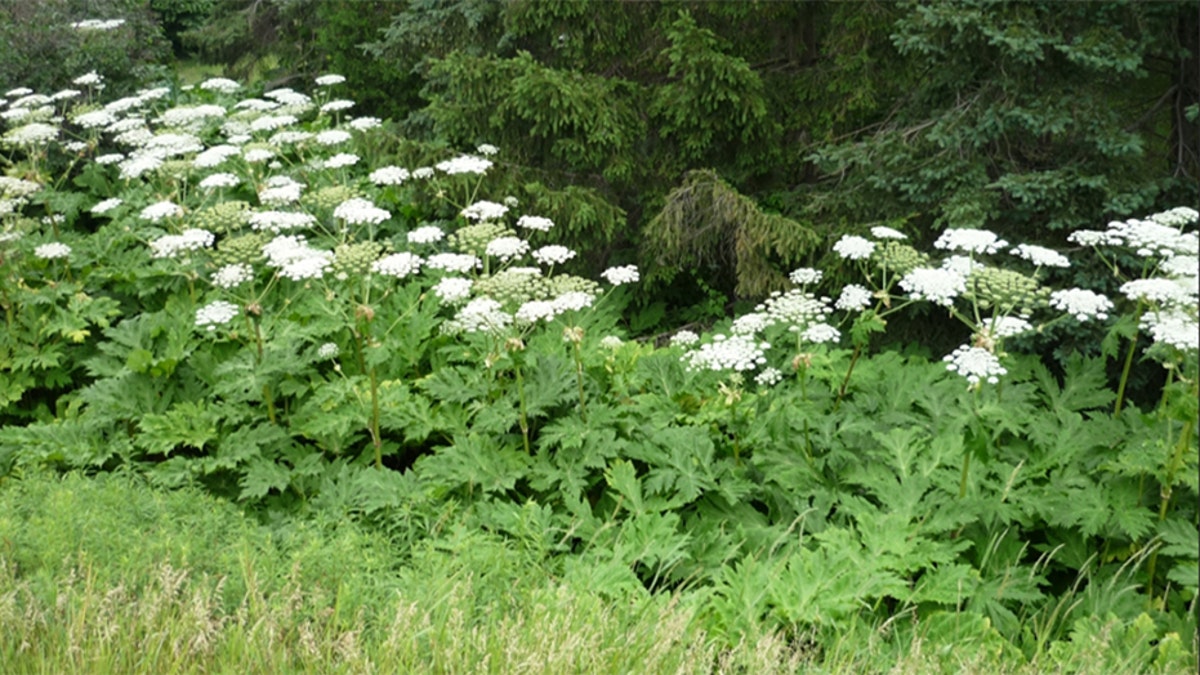Warning: Toxic plant can cause 3rd-degree-burns and blindness
30 giant hogweed plants that can cause 3rd-degree burns and permanent blindness was discovered in Virginia.
Officials in Virginia are warning residents to be on the lookout after an invasive plant was found Tuesday in the northern part of the state that can cause third-degree burns and even permanent blindness.
The Massey Herbarium at Virginia Tech said in a Facebook post that 30 giant hogweed plants were discovered in Clarke County, located between Winchester and Leesburg.
The plant contains a very toxic sap, that when combined with sun exposure, can cause severe health hazards.
"In brief, the sap prevents your skin from protecting itself from sunlight, which leads to a very bad sunburn," according to the New York Department of Environmental Conservation. "Heat and moisture (sweat or dew) can worsen the skin reaction. The phototoxic reaction can begin as soon as 15 minutes after contact, with sensitivity peak between 30 minutes and two hours after contact."
The sap can cause painful blisters that can form and become "dark and pigmented," and scars that can last up to six years, according to the NYDEC.
WARNING: GRAPHIC PHOTOS BELOW

Scars from Giant Hogweed sap can last up to six years, though typically only last a few months. (New York Department of Environmental Conservation)
If the sap gets into the eye, it can even lead to blindness.
Environmental officials in Virginia said that while there has just been one confirmed case in Clarke County, they are warning residents in other parts of the state to stay alert for potential sightings.
"There have been reports from VDOT of sightings of Giant Hogweed in the Staunton area and Middlesex County," Isle of Wight County posted to Facebook. "There is a strong possibility that the Giant Hogweed could find its way into the Tidewater/Coastal Virginia area."

The plants have hollow stems are generally two to four inches in diameter, with dark purple and red raised spots and bristle-like hairs (New York Department of Environmental Conservation)
Besides being a threat to humans, giant hogweed can also impact the environment. The plant can grow up to up to 14 feet, creating a lot of shade in the area and inhibiting the growth of native species. The plants have hollow stems that are generally 2 to 4 inches in diameter, with dark purple and red raised spots and bristle-like hairs.

Giant hogweed can grow up to 14 feet tall. (New York Department of Environmental Conservation)
Environmental officials say that if you want to remove the plant, do not use a weed-whacker, because the plant's sap can splatter and then spread quickly. Eradication should be done by physical removal or using herbicides such as glyphosate or triclopyr, according to the NYDEC.
"It may be possible for hogweed seeds to remain viable in the soil for 15 years," the agency said. "For this reason, long-term monitoring is very important. Check the site and surrounding areas for the next several years for the emergence of any hogweed seedlings or regrowth from previous year's plants."

